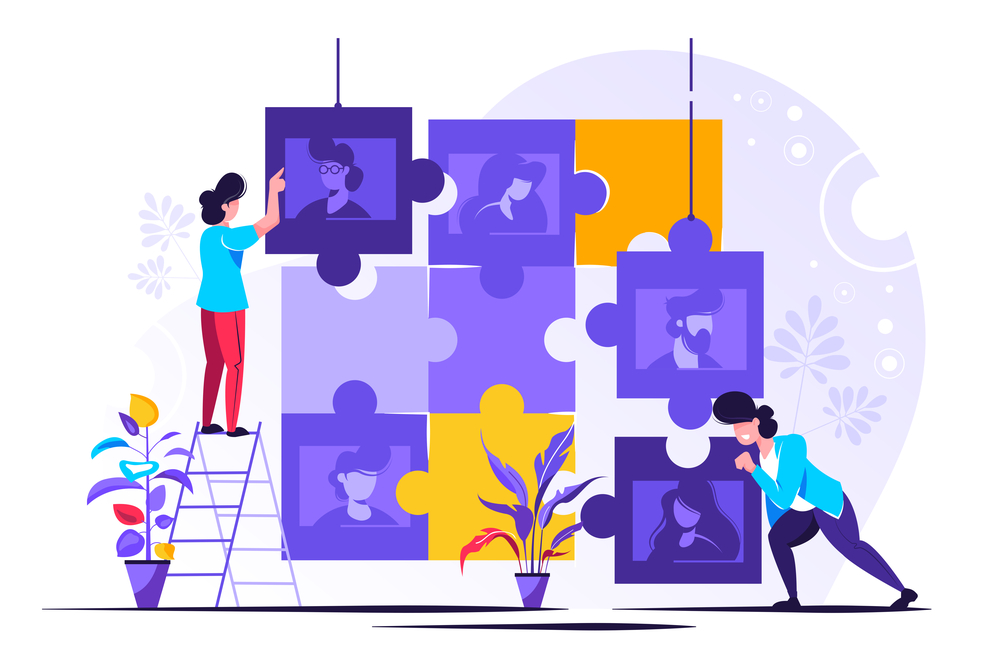Team Assessment Workshop Facilitation Toolkit
This toolkit is a companion to our guide about using assessments for team building and leadership development.
Team Assessment Tool Purpose
This toolkit helps facilitators, team leaders, and learning professionals design and lead effective workshops where teams reflect on, share, and apply their assessment results to improve collaboration, communication, and innovation.
The activities and prompts can be used with any personality, strengths, or innovation assessment.
1. Before the Workshop
Prepare Participants
Send the chosen assessment in advance. Give at least one week for completion.
Share a short pre-work reflection:
“What do you hope to gain from learning about yourself and your teammates?”
“What do you think your strengths and working style are before you see the results?”
Prepare the Space
Arrange the room for small-group discussion (round tables or pods).
Have supplies: sticky notes, markers, flip charts, or digital whiteboards (Miro, Mural).
Display your workshop purpose:
“Understand ourselves and each other so we can collaborate, communicate, and innovate more effectively.”
2. Workshop Flow
Use this as a flexible agenda that works for a half-day or full-day session.
Welcome and Framing (15–30 minutes)
Share objectives: building self-awareness, understanding team dynamics, and improving collaboration.
Set psychological safety norms: curiosity, confidentiality, and respect for differences.
Explain that the assessment provides language, not labels.
Facilitator Tip: Start with a short icebreaker that connects to the theme of differences and collaboration (e.g., “How do you like to start your day?”).
Individual Reflection (30 minutes)
Have participants quietly review their assessment results. Provide printed or digital copies.
Use prompts such as:
What insights or surprises do I see?
What strengths do I bring to the team?
What challenges or blind spots might I need to manage?
How do I prefer to communicate or make decisions?
Encourage participants to jot notes or highlight phrases that stand out.
Pair and Share (30–45 minutes)
Have participants discuss their reflections with a partner or small group.
Suggested discussion prompts:
What parts of your results feel most accurate?
How do your preferences or strengths show up in teamwork?
What differences or similarities do you notice between you and your partner?
How could these differences make your collaboration stronger?
Facilitator Tip: Rotate partners to increase exposure to diverse perspectives.
Team Mapping (45–60 minutes)
Create a visual map of team results.
For DISC or MBTI: Place sticky notes or icons representing each participant on a quadrant or grid.
For StrengthsFinder: Create a wall display of top themes by category (Strategic Thinking, Influencing, Relationship Building, Executing).
For Big Five: Plot team averages across Openness, Conscientiousness, Extraversion, Agreeableness, and Neuroticism.
For I² Skills: Cluster team members by their dominant innovation skills (e.g., Discover, Define, Develop, Deliver).
Then facilitate discussion:
What patterns or trends do you notice?
Where do we have strong representation? Where are we less balanced?
How do our differences create opportunities—or challenges—for collaboration?
How might we adjust how we communicate or make decisions based on this?
Applied Practice or Challenge (60–90 minutes)
Now move from reflection to application. Choose one of the following:
A. Innovation Challenge:
Use a real organizational problem or prompt. Ask teams to brainstorm and prototype solutions while intentionally using their diverse strengths or profiles.
B. Collaboration Simulation:
Run a short activity like building a process, designing a service, or prioritizing tasks. Have teams reflect afterward on how their styles influenced the result.
C. Role-Based Reflection:
Ask teams to assign or rotate roles (facilitator, recorder, idea generator, challenger) that align with their natural strengths or stretch them.
Facilitator Tip: Continuously connect the activity back to the assessment language. (“How did your DISC style influence your approach?” “Which strengths helped you navigate this?”)
Team Debrief and Reflection (30–45 minutes)
Bring the team back together. Ask open-ended questions to surface insights:
What did we learn about our team’s dynamics?
What worked well about our collaboration?
How did our different styles contribute to or challenge our success?
How can we intentionally use our diversity to improve performance?
Record patterns and insights on a flip chart or digital board.
Action Planning and Commitments (20–30 minutes)
Encourage the team to turn insights into action:
What 2–3 behaviors or norms will help us work better together?
What can each of us commit to doing differently based on our results?
How can we continue learning about each other beyond this workshop?
Write commitments on cards or in a shared document and revisit them in future team meetings.
3. After the Workshop
Follow-Up Ideas
Schedule a 30-day check-in to review commitments.
Encourage team leads to reference assessment insights in one-on-one meetings.
Incorporate assessment reflections into project debriefs or retrospectives.
Consider layering in new assessments (e.g., innovation, values, or emotional intelligence) over time.
Reflection Prompts for Reinforcement
What am I noticing differently about how I work with others?
What actions have I taken based on what I learned?
What has improved in our collaboration since the workshop?
4. Additional Tools and Resources
These can be integrated into your assessment-based sessions to extend the learning into innovation, leadership, and collaboration.
5. Sample Closing Script for Facilitators
“Today we explored who we are as individuals and as a team. We discovered patterns in how we communicate, make decisions, and solve problems. The goal isn’t to change who we are, but to understand and leverage our diversity to perform and innovate together. Let’s take what we’ve learned and turn it into daily actions that make our team stronger.”
Conclusion
The Team Assessment Workshop Toolkit helps leaders turn assessment data into learning, collaboration, and innovation. Whether you use DISC, MBTI, StrengthsFinder, Big Five, or the I² Skills Assessment, this guide supports your team in transforming awareness into action.
You can adapt it for any length—from a two-hour session to a multi-day retreat—and for any audience, from new teams to senior leadership groups. Contact us if you’ve got an important workshop or training and need expert help.
